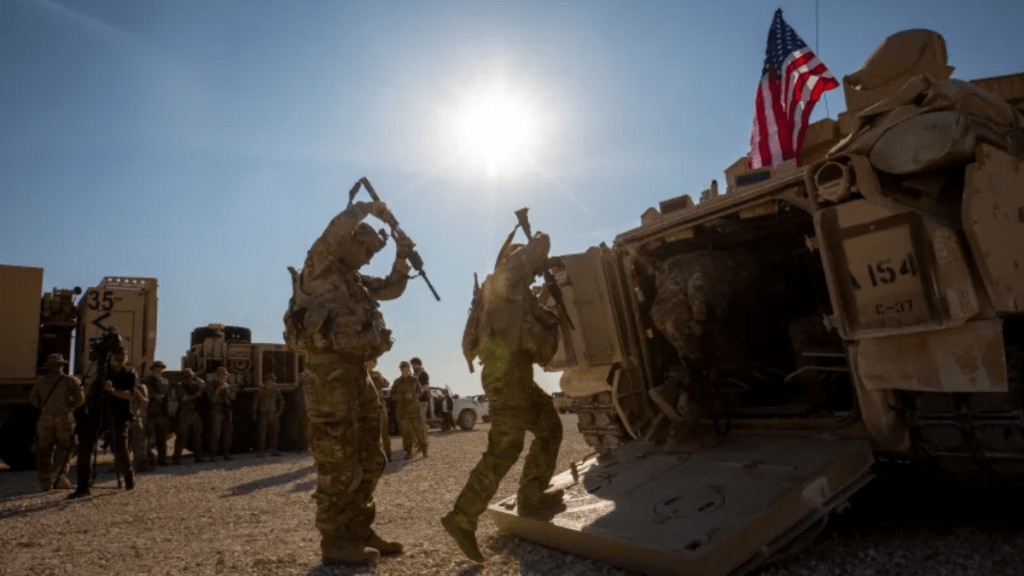As Donald Trump prepares for his second term, the situation in Syria remains a critical issue for both his administration and global stability. With tensions escalating and the remnants of ISIS still a threat, the US military’s role in Syria is a focal point. The remarks made by the outgoing US Defence Secretary Lloyd Austin ahead of Trump’s inauguration underscored the ongoing necessity for American forces to remain stationed in the war-torn country.
The Role of US Forces in Syria
Austin’s statement about the need for US troops in Syria is rooted in the ongoing threat posed by ISIS. Despite the seeming collapse of the terror group, thousands of ISIS prisoners, many of whom are deemed highly dangerous, remain locked up in detention centers across Syria. Austin pointed out that around 10,000 ISIS detainees are currently held in various facilities, with roughly 2,000 considered top-level threats.
The fear that ISIS could regain strength in Syria is a driving factor behind the continued US military presence. US forces, numbering around 2,000 in Syria, are tasked with ensuring that ISIS does not regroup and take advantage of the fragile situation in the country. Austin’s remarks during a visit to Ramstein Air Base in Germany, where he was discussing military support for Ukraine, reflected his concern over the destabilizing potential of an ISIS resurgence in the region.
Regional Dynamics and the Kurdish Dilemma
The Syrian conflict has become a complex web of geopolitical interests. The US has been a long-time supporter of the Kurdish forces in northern Syria, particularly the Syrian Democratic Forces (SDF), which have been instrumental in defeating ISIS. However, this alliance is fraught with tension, as Turkey, a NATO ally, vehemently opposes Kurdish autonomy in Syria due to fears of Kurdish separatism.
Despite the defeat of ISIS, the Kurdish forces still dream of a unified Kurdish state encompassing parts of Syria, Iraq, Turkey, and Iran. This ambition is at odds with the policies of both Turkey and Iran, who view Kurdish independence as a direct threat to their territorial integrity. Consequently, Turkey has launched airstrikes on Kurdish positions in Syria, further complicating the situation.
In addition, the SDF’s control over northern Syria has led to clashes with Syrian government forces and other rebel factions, such as Hayat Tahrir al-Sham (HTS). These tensions contribute to the broader instability, which remains a critical challenge for US and Israeli interests in the region.
US Military Actions and Messages to the Rebels
The US has not hesitated to use military force to ensure that ISIS does not resurface. Over the years, US airstrikes have targeted ISIS positions across Syria, with over 75 airstrikes reported in a single operation to neutralize the group’s remnants. General Michael Eric Kurilla, commander of US Central Command, made it clear that the US would continue to target any group or individual that attempts to collaborate with ISIS.
At the same time, Israel has stepped up its military operations in Syria, particularly along the Golan Heights, with over 100 airstrikes aimed at preventing Iranian-backed forces from gaining a foothold near Israel’s borders. This growing regional involvement highlights the broader stakes of US and Israeli operations in Syria, which are not just about defeating ISIS but preventing the spread of Iranian influence and further destabilization.
Trump’s Potential Role
As Trump returns to the White House, his foreign policy decisions in Syria will be closely scrutinized. Trump’s previous tenure saw a shift toward a more isolationist approach, with reduced U.S. involvement in some regions. However, the situation in Syria presents a unique challenge. The US must balance its desire to combat terrorism with the need to navigate complex alliances and prevent a new wave of extremism from taking hold.
Trump’s stance on US forces in Syria will likely be influenced by both domestic politics and the evolving security landscape. The challenges posed by ISIS, Kurdish autonomy, and Iranian influence will require a careful diplomatic and military strategy. If the US pulls back too soon, it risks allowing ISIS to regroup; if it remains engaged, it risks further entanglement in the region’s complex geopolitical rivalries.
Ultimately, the US military presence in Syria is not only about preventing ISIS from reasserting itself but also about maintaining strategic influence in a region that remains crucial for global security. How Trump navigates these challenges will have lasting implications for the Middle East and beyond.

